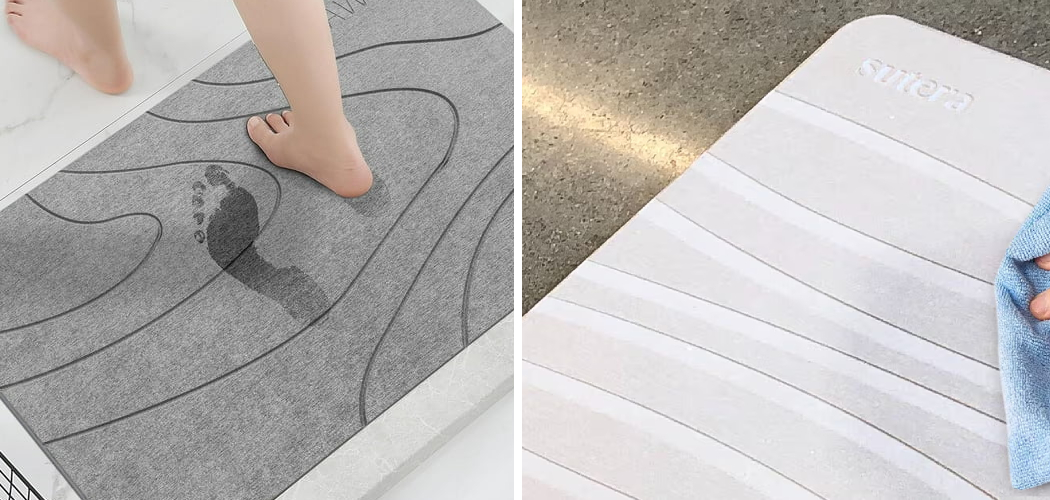Are you tired of your stone bath mat looking dull and dirty? Stone bath mats are a beautiful addition to any bathroom, but they require special care and cleaning to maintain their natural beauty.
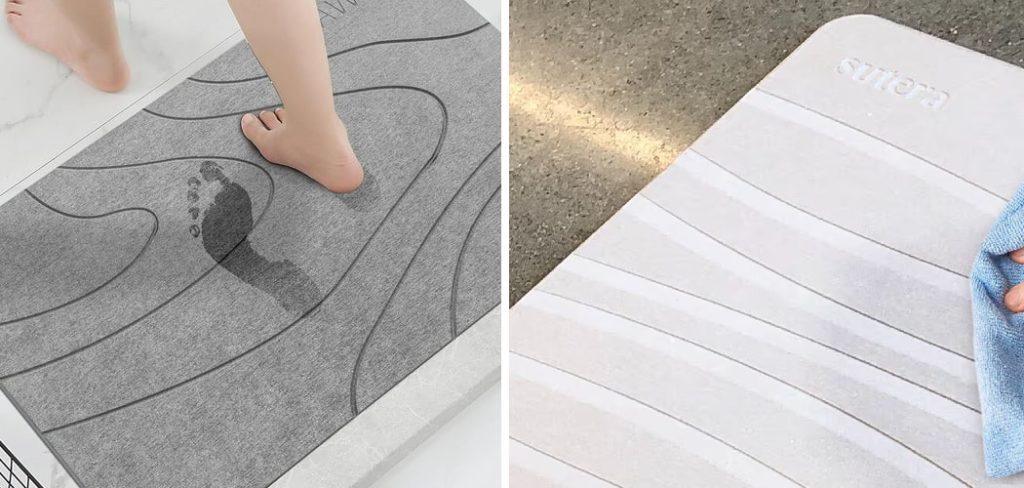
Stone bath mats present an attractive, spa-like aesthetic to any bathroom, offering a touch of nature and a unique feel underfoot. Unlike traditional fabric bath mats, stone mats require different care to ensure they remain clean, hygienic, and visually appealing. Cleaning a stone bath mat isn’t complicated, but it does involve a few specific steps to maintain its natural beauty and prevent damage.
In this guide on how to clean stone bath mat, we’ll walk you through the essential tips and techniques to keep your stone bath mat looking as pristine as the day you bought it, ensuring it continues to elevate your bathroom’s ambiance.
Why Do Stone Bath Mats Require Special Care?
Unlike their textile counterparts, Stone bath mats are crafted from natural materials, making them more susceptible to damage from harsh cleaning agents and improper care.
These mats are often made from river rocks, pebbles, or other types of stone adhered to a backing material. The porous nature of these stones means they can easily absorb water and soap, leading to potential mold and mildew growth if not properly maintained. Additionally, using abrasive cleaners can scratch or dull the smooth surface of the stones, detracting from their natural beauty.
Therefore, to preserve the aesthetic appeal and longevity of a stone bath mat, it’s crucial to follow a gentle yet effective cleaning routine that respects the natural properties of the materials.
What Will You Need?
Before we dive into the cleaning process, gather the following supplies:
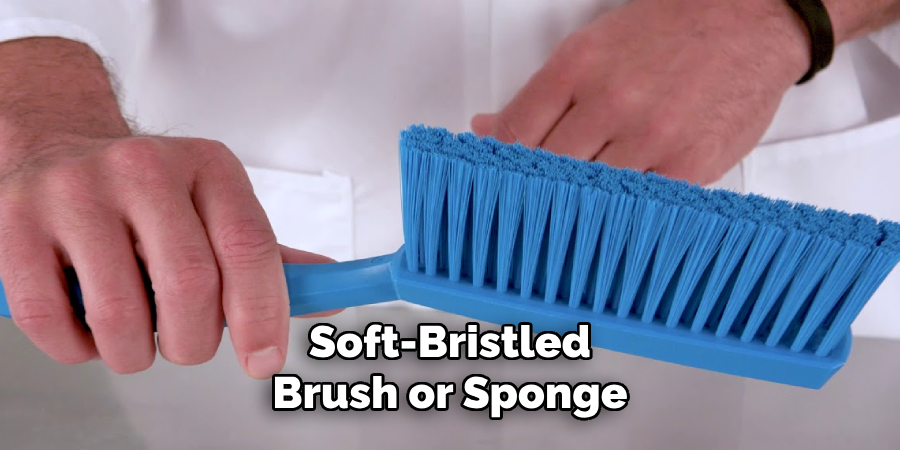
- Mild soap or stone-safe cleaner
- Soft-bristled brush or sponge
- White vinegar
- Microfiber cloth or towel
Once you have these items, you’re ready to start cleaning your stone bath mat.
10 Easy Steps on How to Clean Stone Bath Mat
Step 1. Remove Excess Debris
The first step in cleaning a stone bath mat is to remove any loose debris or dirt that may be stuck between the stones. Use a soft-bristled brush or sponge to gently scrub the surface and loosen any dirt or debris. Additionally, you can use a vacuum cleaner with a soft brush attachment to remove any loose particles.
Step 2. Rinse With Warm Water
Rinsing your stone bath mat with warm water is a crucial second step in the cleaning process. It helps in preparing the surface by removing the initial layer of dirt, making the subsequent cleaning steps more effective. Ensure to evenly spray or pour warm water over the entire mat, paying special attention to areas between the stones where dirt can easily accumulate.
This initial rinse aids in softening and lifting any remaining debris, setting the stage for a deeper clean with your selected cleaning agents. Avoid using hot water, as extreme temperatures can potentially damage the adhesive holding the stones in place. Warm water is sufficient to facilitate cleaning without risking damage to your stone bath mat.
Step 3. Apply Mild Soap or Stone-Safe Cleaner
Once your stone bath mat is rinsed with warm water, it’s time to apply a mild soap or a cleaner that is safe for stone materials. Dispense a small amount of the cleaning solution directly onto the mat or onto a soft-bristled brush or sponge.
Gently scrub the stones and the spaces between them, ensuring that the cleaner covers the entire surface area of the mat. It’s important to use a gentle, circular motion to avoid damaging the stones or the mat’s backing material. This step helps to break down and lift away any oils, grime, or accumulated buildup on the stones.
Step 4. Rinse Again With Warm Water
After thoroughly applying and scrubbing the mat with your cleaning solution, the next step is to rinse the mat again with warm water.
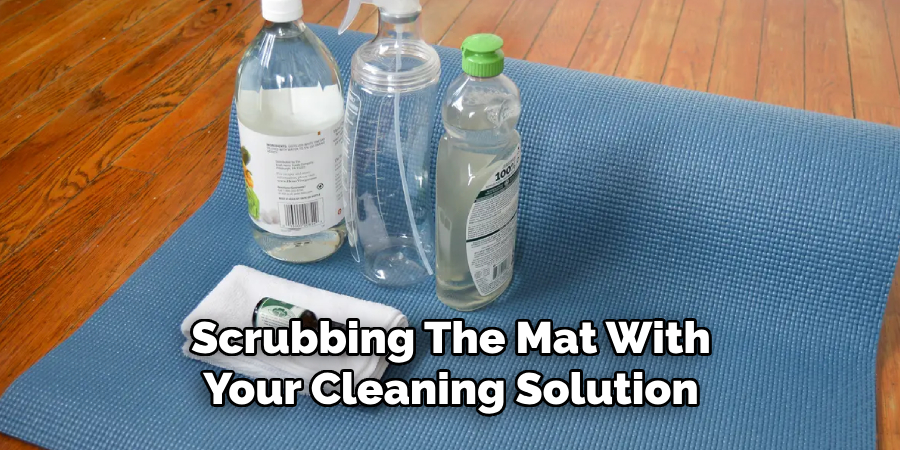
This second rinse is crucial for washing away all the soap, dirt, and other residues loosened from the mat’s surface. Make sure to rinse the mat thoroughly, ensuring that no soap suds or cleaner remains, as these can attract more dirt or create a slippery surface.
A thorough rinse also helps to prevent any potential damage or discoloration to the stones from the cleaning agents. Rinse until the water runs clear and you’re confident that all cleaning solutions have been removed.
Step 5. Disinfect with White Vinegar Solution
For an extra level of cleanliness, consider disinfecting your stone bath mat with a solution of white vinegar and water. Mix equal parts of white vinegar and water in a spray bottle and lightly mist the solution over the mat. The acidity of the vinegar acts as a natural disinfectant, helping to kill any remaining bacteria or mold spores without damaging the stones.
Allow the vinegar solution to sit on the mat for about 5 minutes. Be cautious not to oversaturate the mat, as excessive moisture can be harmful. This step is particularly useful for ensuring your stone bath mat is not only clean but also hygienic.
Step 6. Rinse Thoroughly After Disinfecting
After allowing the vinegar solution to sit on the mat for the allotted time, it’s important to rinse the mat once again thoroughly with warm water. This step ensures that all traces of vinegar are washed away, as any residual vinegar could potentially affect the stones’ appearance over time.
A complete rinse helps maintain the natural look of the stones and prevents any unwanted odors from the vinegar. Ensuring that all the disinfectant solution is removed is crucial to the overall maintenance and care of the stone bath mat.
Step 7. Dry the Mat Completely
After the final rinse, it’s essential to dry your stone bath mat thoroughly to prevent any mold or mildew growth. Begin by gently shaking off any excess water, then place the mat in a well-ventilated area or outside in the sun to allow it to air dry. Avoid leaving the mat in a damp or shaded area, as this can prolong the drying process and potentially encourage the growth of unwanted organisms.
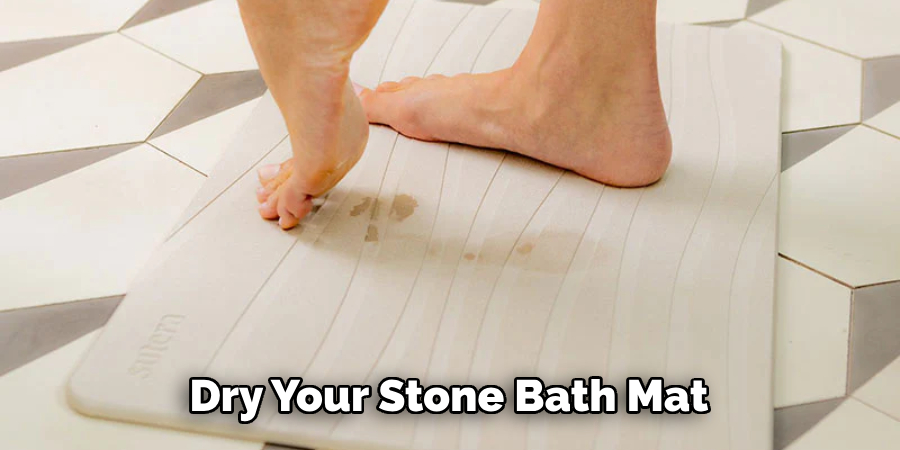
If possible, elevate the mat to ensure air can circulate freely around and beneath it, speeding up the drying process. You can also pat the surface with a microfiber cloth or towel to absorb additional moisture. Ensuring the mat is completely dry before its next use will help maintain its longevity and aesthetic appeal.
Step 8. Inspect and Repair Any Damage
Once your stone bath mat is clean and completely dry, take a moment to inspect it for any damage or loose stones. Over time, the adhesive that holds the stones in place can weaken, leading to potential hazards if stones become dislodged. If you find any loose or missing stones, you may need to reattach them using a waterproof adhesive that is safe for stone materials.
Apply a small amount of adhesive to the base of the stone or the mat and press firmly into place. Allow sufficient time for the adhesive to dry according to the manufacturer’s instructions before using the mat again. This step is crucial for ensuring the safety and durability of your stone bath mat.
Step 9. Regular Maintenance
To ensure the longevity and beauty of your stone bath mat, incorporate these cleaning steps into your regular maintenance routine. Ideally, a thorough clean should be performed every two weeks or more frequently if the mat is used daily or exposed to excessive moisture.
Regular maintenance prevents the buildup of grime, soap scum, and harmful bacteria, keeping the mat both visually appealing and hygienically clean. Additionally, consider placing a towel under the mat after each use to absorb any residual moisture, further protecting the adhesive and stones from weakening.
Step 10. Store Properly When Not in Use
If there comes a time when you need to store your stone bath mat, whether for seasonal changes or extended periods of non-use, it’s important to do so properly to prevent damage. First, ensure the mat is completely dry following the cleaning and drying steps outlined previously.
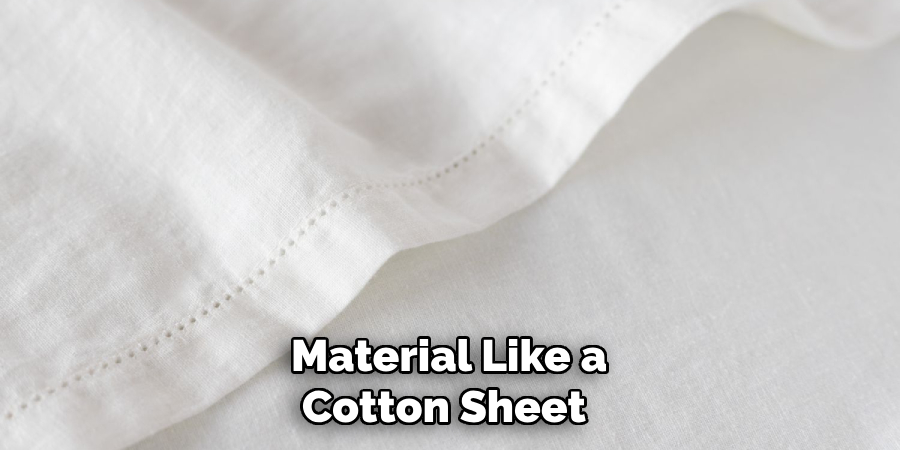
Wrap the mat in a breathable material like a cotton sheet to protect it from dust and scratches. Store the mat in a cool, dry place away from direct sunlight or extreme temperatures, which could cause the stones to crack or the adhesive to degrade. Proper storage maintains the mat’s condition, ensuring it’s ready for use whenever needed.
By following these simple cleaning and maintenance steps, you can enjoy your stone bath mat’s natural beauty and therapeutic benefits for years to come.
5 Additional Tips and Tricks
- Avoid Harsh Chemicals: To maintain the integrity of your stone bath mat, avoid using harsh chemicals and acidic cleaners. Opt for mild, pH-neutral soaps to prevent eroding the stone’s surface.
- Use a Soft Brush: For stubborn dirt and residue, gently scrub the mat with a soft-bristled brush. This method helps to reach into crevices without scratching or damaging the stone.
- Leverage Baking Soda for Tough Stains: Make a paste of baking soda and water for more challenging stains. Apply it to the stain, allow it to sit for 10-15 minutes, then scrub gently and rinse thoroughly.
- Dry Completely After Cleaning: After washing or performing any wet cleaning process, ensure the stone bath mat is completely dry before using it again. You can air dry it outside or use a clean cloth to absorb excess moisture. This step prevents mold and mildew growth.
- Seal the Stones Periodically: Depending on usage and exposure to water, consider applying a stone sealer once or twice a year. This process will enhance the stone’s resistance to water and stains, making it easier to clean in the future.
With these additional tips and tricks, you can maintain the beauty and functionality of your stone bath mat for years to come.
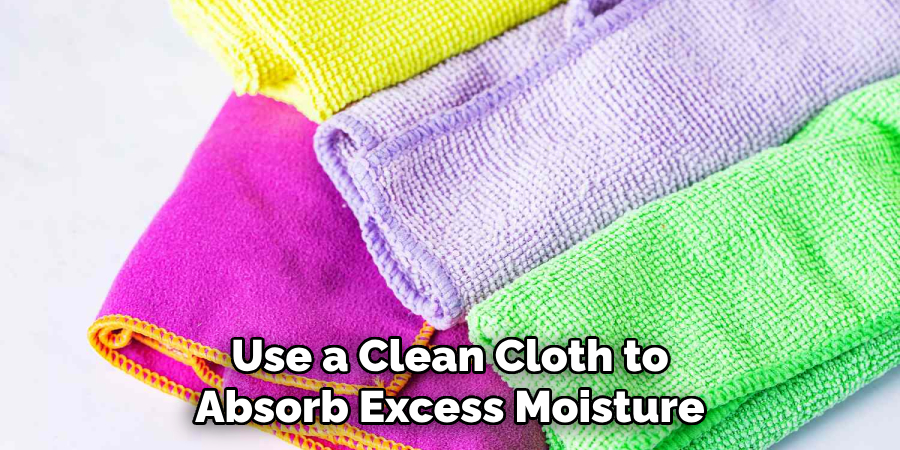
5 Things You Should Avoid When Cleaning a Stone Bath Mat
- Do Not Use Bleach: Exposing your stone bath mat to bleach can significantly damage the stone’s natural finish and can lead to discoloration.
- Avoid High-Pressure Washing: While using a high-pressure washer may seem like an efficient way to clean, it can actually erode the surface of the stones and dislodge the grout or adhesive holding them in place.
- Steer Clear of Abrasive Scrubbers: Metal brushes or highly abrasive scrubbers can scratch and harm the stone’s surface. Always opt for softer, gentler cleaning tools.
- Don’t Leave Standing Water: After cleaning, ensure no standing water is left on or under the mat. Standing water can promote the growth of mold and mildew, which can be difficult to remove and pose health risks.
- Avoid Direct Sunlight When Drying: While it’s important to thoroughly dry your stone bath mat, avoid placing it in direct sunlight to dry. The intense heat and light can cause some stones to fade or crack over time.
By avoiding these common mistakes, you can prevent damage and preserve the quality of your stone bath mat.
What are the Causes of Stains and Discoloration on a Stone Bath Mat?
Stains and discoloration can be caused by a variety of factors, including:
- Exposure to Hard Water: Hard water contains high levels of minerals like calcium and magnesium, which can leave behind residue that causes stains.
- Lack of Regular Cleaning: Without proper care and maintenance, dirt, soap scum, and other debris can build up on the surface of the stone and cause discoloration.
- Use of Harsh Chemicals: As mentioned earlier, harsh chemicals and acidic cleaners can damage the stone’s surface and cause stains or discoloration.
- Mold and Mildew Growth: If not properly dried after use, mold and mildew can grow on the surface of a stone bath mat, causing discoloration and potential health hazards.
- Exposure to UV Light: Some types of stones may be sensitive to UV light and can fade or change color when exposed to direct sunlight for prolonged periods.
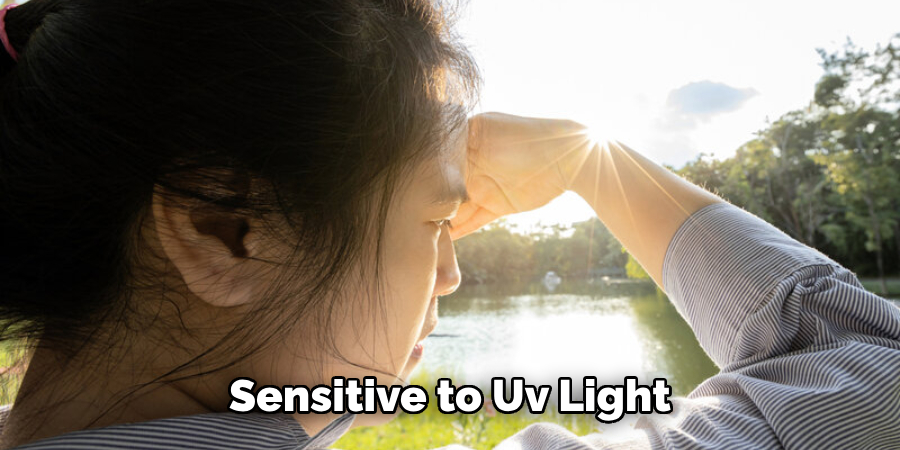
By understanding the causes of stains and discoloration, you can take preventative measures and maintain the beauty of your stone bath mat.
Can You Wash Bath Mats With Vinegar?
Yes, you can use vinegar to clean your stone bath mat, but diluting it with water first is important. Straight vinegar can be too harsh and may damage the stone’s surface. Mix equal parts of white vinegar and water in a spray bottle and apply it to the mat. Let it sit for a few minutes before wiping it off with a soft cloth or brush.
Rinse thoroughly and dry completely before using the mat again. Vinegar is a natural and cost-effective cleaning solution that can help remove stains and disinfect your stone bath mat. However, it’s still recommended to use mild, pH-neutral soaps for regular cleaning to avoid any potential damage.
Overall, with proper care and maintenance, your stone bath mat can be a long-lasting and beautiful addition to your bathroom. Use these tips and tricks to keep it clean, avoid common mistakes, and preserve its natural beauty for years to come. So go ahead and enjoy a luxurious bath experience on your stone bath mat without any worries!
What Can Damage a Stone Bath Mat?
While stone bath mats are durable and long-lasting, there are a few things that can damage them, including:
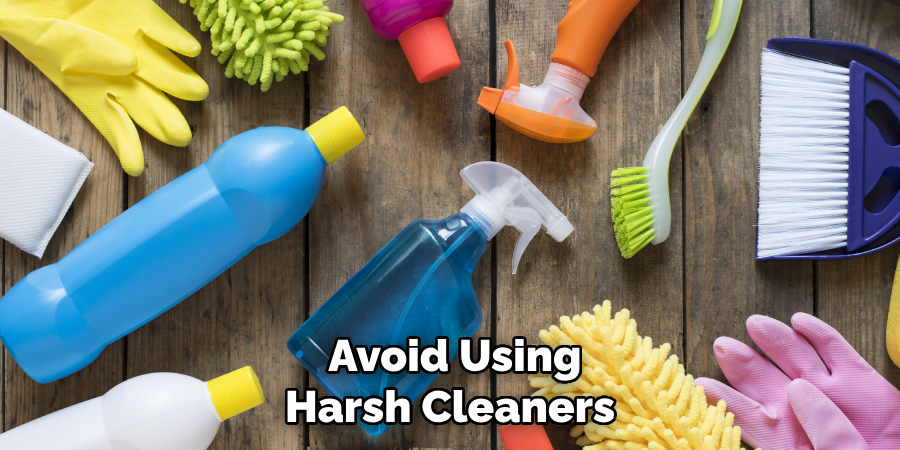
- Abrasive Cleaning Tools: As mentioned earlier, abrasive scrubbers or metal brushes can scratch and harm the stones’ surface.
- Harsh Chemicals: Avoid using harsh cleaners or acidic solutions on your stone bath mat, as they can erode the stone’s surface and cause damage.
- Excessive Weight or Pressure: Placing heavy objects on the mat or applying excessive pressure while cleaning can crack or break the stones.
- Direct Sunlight: Some types of stones may be sensitive to UV light and can fade or change color when exposed to direct sunlight for prolonged periods.
Always use gentle cleaning tools to protect your stone bath mat from damage and avoid harsh chemicals. Additionally, avoid placing heavy objects on the mat and protect it from direct sunlight when not in use. Regular maintenance and proper care can go a long way in preserving the beauty and functionality of your stone bath mat.
Conclusion
In conclusion, cleaning a stone bath mat requires a gentle, thoughtful approach to maintain its natural beauty and ensure its longevity.
By using mild, pH-neutral soaps, avoiding harsh chemicals and abrasive cleaning methods, and ensuring the mat is dried thoroughly after use, you can keep your stone bath mat looking as pristine as the day you bought it. Regular maintenance, including periodic sealing and careful handling, will prevent damage and keep discoloration at bay.
Remember to avoid common cleaning mistakes, such as using bleach or leaving the mat in direct sunlight. By following these guidelines, your stone bath mat will continue to add a touch of luxury and natural beauty to your bathroom for years to come.
Hopefully, this guide has provided you with all the information you need on how to clean stone bath mat. Now it’s time to indulge in a relaxing, spa-like bath experience on your beautiful, well-maintained stone bath mat! Happy soaking!

